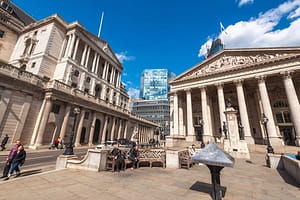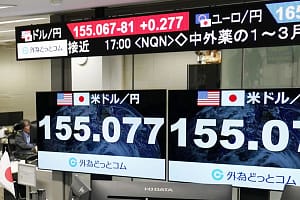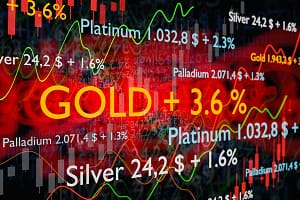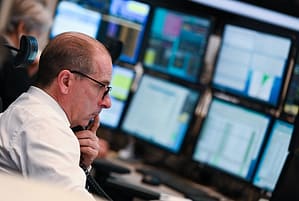Last month I said “Be ready for more volatility”. Little did I know that we would see one of the most volatile months in market history. After the fastest stock market meltdown ever (US stocks -34% in a month) we then saw a 3 day bounce of 17.5% of the likes not seen since the 1930s. With weekend emergency central bank interventions, unprecedented fiscal stimulus packages and overnight futures gapping to circuit breakers causing regular market halts, March 2020 will not be forgotten easily.
The COVID-19 Global pandemic has proven to be the pin that finally popped the multiple bubbles that years of cheap money had fuelled across global asset markets. What at first seemed like a Chinese domestic issue, has now found it’s way to all corners of the globe, assisted by the interconnected nature of our global society. Official infection rates in the US and Europe have now overtaken China and containment efforts through social distancing and quarantines are in effect in all major countries.
Death rates in Italy and Spain look particularly concerning relative to asian countries that seem to have had more success in reducing infections due to stricter measures such as enforced lockdowns, mask wearing and surveillance to monitor their population’s movements. The biggest worry right now is the way the virus is spreading in the US and UK whose leaders seemed to be slow to react to the threat, due to a reluctance to impose restrictions on people’s freedoms and crash their economies. This denial, a lack of sufficient testing and failure to respond quickly may be what causes their healthcare systems to be overwhelmed over the coming weeks and prolongs the problem, leading to potentially higher death rates and even more economic hardship.
The markets reaction to emergency rate cuts from the FED (150 bps of them!) was to quickly sell off, which informed governments that more real world support would be required to restore confidence. Governments obliged by approving enormous economic support packages amounting to trillions of USD in fiat money creation promising support for businesses and individuals to compensate for lost wages and revenues. The hope is that for a few months, these packages will be the life support the economy needs before the virus is behind us and the V-shaped recovery can begin. The theory is that as long as the productive capacity of the economy is preserved, we can get back to normal sooner rather than later and the recession that ensues will be short lived.
The not so optimistic view would be that the damage done to the economy will take years to recover from. Credit markets have seized up which will lead to defaults from leveraged investments which will trigger margin calls, more portfolio liquidations and forced selling. The cheap money that corporates where able to borrow in the credit markets and use for stock buybacks will not come back any time soon and so equities will be forced to reflect the true profitability of companies. If the demand and supply side shocks to growth persist, we could be looking at market wide corporate losses and record high unemployment for months if not years to come. Also the repricing of oil from 60 to 20 dollars will have major implications for the global economy due to many countries dependence on that industry.
Looking at past bear markets as an analog to what might happen going forward, it was clear we would get some kind of bear market rally. This was triggered by some optimism that central banks and governments would do “whatever it takes” to support the global economy and there was effectively no limit to the amount of money that they could print to support asset prices. There was also a decent amount of month end portfolio rebalancing flows that gave a bid to equities this week.
The next phase will probably be determined by whether the support that has been promised can actual get to people quickly enough to prevent businesses failing and jobs being lost. The virus counts need to peak, but even then, the death rates will depend on how well the healthcare infrastructure can cope. Social unrest is already started to show up in Italy, who have been in lockdown for over a month. Imagine if that becomes widespread in the US, these sort of headlines will not do wonders for investor or consumer confidence. My gut says we are likely to re-test the lows in markets even if it’s not with so much panic and velocity. I would rather wait and see some clarity on the virus situation and how the world is coping with it’s “coma-like” condition before getting back into risk assets.
Fundamentals for Gold have never been better as the only form of money that isn’t being printed. Prices have recently started to recover after being hit by liquidation selling (think risk parity unwinds) and I am carefully watching to see if Gold can decouple from equities in the next leg down. If so, I think we are headed to well over $2000 in the next 6 months.
The other potential safe haven is the US dollar, there is a real risk that in another wave down in markets, the USD will breakout to the upside as EM countries scramble for dollars and tensions in the EU rise about how to manage the humanitarian crisis leading to calls for Italy (and maybe others) to leave the EUR. With every economy effectively being forced to do “helicopter money”, having a reserve currency status may come to the Greenback’s rescue at least in the short term.
After years of suppression, it looks like volatility is back with a vengeance and it’s no going to go away quietly!
Written by, Imran Lakha, Senior Advisor, Vanguard Capital AG & CEO and Founder of Options Insight, Financial Markets Training.






Leave a Comment